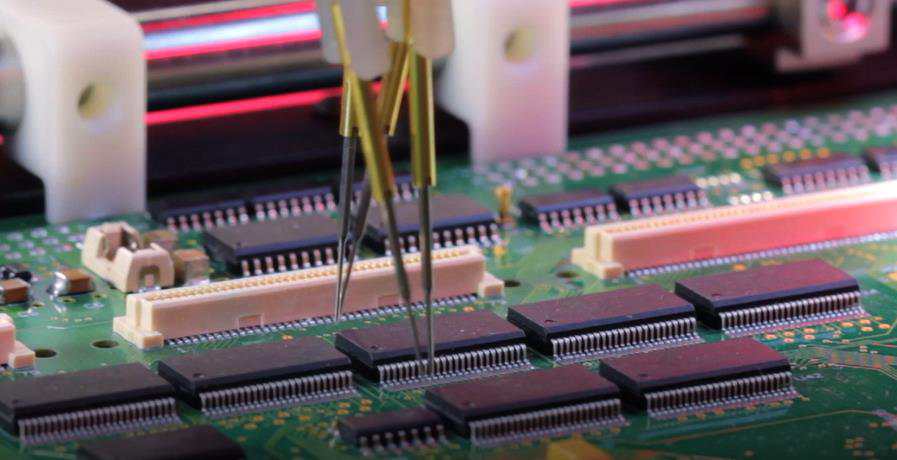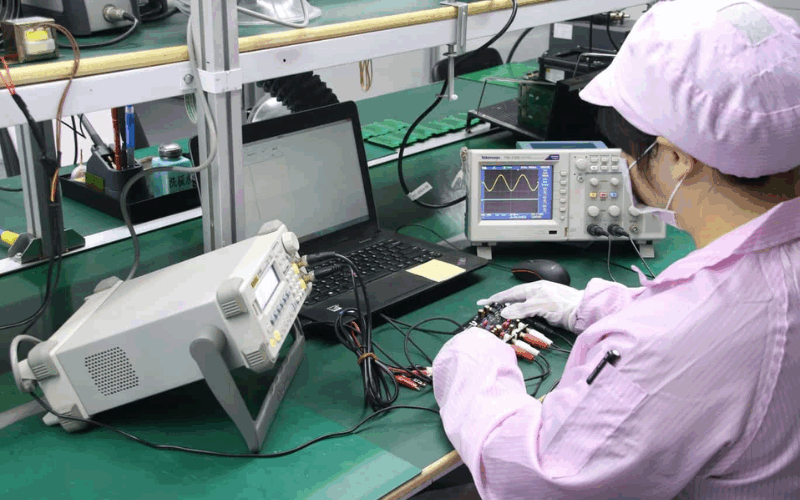Rugged Tablet has a wide range of applications in multiple fields, including industrial Automation control, data acquisition and processing, communication and on-net, human-computer interaction and intelligent Administration. Rugged Tablet supports a variety of communications protocols and interfaces, which can communicate and exchange data with various Industrial Devices, realize remote monitoring and management, and improve production efficiency and equipment utilization.
How to control the quality during the production and assembly of Rugged Tablet PCB boards?
Quality control plays the most critical role in Rugged Tablet PCB manufacturing and assembly. If there is no strict quality control during the production and inspection process, the final product will not work normally. In this article, we will discuss several commonly used quality test methods in PCB manufacturing and assembly, and understand the importance of each quality test and test method together.
Common methods of quality inspection and testing:

PCB visual inspection
Visual inspection can be performed manually and/or by AOI machines. Manual inspection is the simplest method to check PCBs. A qualified operator inspects the board at a specified magnification and checks whether there is any anomalies based on the design requirements and work instructions. This type of inspection does not require highly specialized machines but has some drawbacks such as being limited by operator experience and work fatigue.
In contrast, AOI machines solve the problems of that drawbacks. When doing inspection with it, light can be adjustable, magnification and teachable software for image Comparison are available. AOI machines can not only detect defects on the PCB surface using various magnifications, but also perform 2D or 3D detection depending on the machine's capabilities.
In PCB assembly, AOI machines use image features to identify defects in printed circuit boards. Its main parts include a camera, processor, lens, software, and light. The following defects can be detected:
Visual inspection has some limitations in PCB manufacturing and assembly because it cannot accurately identify defects that may cause electrical connection problems. Therefore, electrical testing is still required to understand the functional performance of the board.
X-Ray inspection
X-ray inspection is a detection technology that can inspect solder joints in PCBs and identify faults in multilayer PCBs; it is particularly helpful for detecting errors under BGA components that cannot be found through visual inspection. The PCB enters a vacuum X-ray chamber, and X-rays can penetrate the components to produce clear images of the parts. The device components include an X-ray source, a detector, and a moving platform. X-ray imaging leverages the different absorption of X-rays by various materials. Materials with larger atomic weight, density, and thickness absorb more X-rays, resulting in clear images. Therefore, X-ray inspection helps to find out soldering problems, missing components, voids, and solder bridging.
This non-destructive detection is very important in PCB quality control because it can discover hidden defects and potential issues in advance, such as the assembly of BGA components in high-tech projects.

Flying probe
Flying probe testing's basic setup includes a work stand for pinning the PCB and movable test pins that allow the accessibility to test points on the printed circuit board. While it is versatile and efficient, but its testing procedure is slow, which is why it is more often used for small-scale and prototype Design services. In this method, the device under test (DUT) is transported into the tester while probes move from point to point as indicated by the test program. The probes test each connection, while receiving sensors measure signals to detect any shorts, opens, and electrical anomalies in the circuit. Flying probe testing does not require fixtures and is well-suited for a wide range of test Options.

Functional Testing
Functional testing is the final testing and a critical step in PCB assembly to verify whether the product meets design and specification requirements. The functional tester simulates the working environment of the printed circuit board by applying a load while measuring functional test items such as current, voltage, analog and digital signals. While online testing focuses on the performance of individual components, functional testing verifies the overall functionality of the printed circuit board. Simulating field conditions helps determine if the board will function normally during application.
As 15-year highly-spoken PCB manufacturer, Kingsheng has rich-experienced PCB manufacture and assembly of Rugged Tablet with solid and comprehensive quality control to minimize or even dismiss defects and non-conformances in the manufacturing and assembly process. As robust PCB and PCBA vendor, we always value quality to ensure the final product can run as required.
Please send Email to kspcba@c-alley.com or call us through +86 13828766801 Or submit your inquiry by online form. Please fill out below form and attach your manufacturing files( PCB Gerber files and BOM List) if need quotation. We will contact you shortly.
 +86 13828766801
+86 13828766801 kspcba@c-alley.com
kspcba@c-alley.com https://www.kingshengpcba.com/
https://www.kingshengpcba.com/ 2/F, Building 6, Tangtou 3rd Industrial Zone, Tangtou Community, Shiyan Town, Baoan District, Shenzhen, China, 518108
2/F, Building 6, Tangtou 3rd Industrial Zone, Tangtou Community, Shiyan Town, Baoan District, Shenzhen, China, 518108